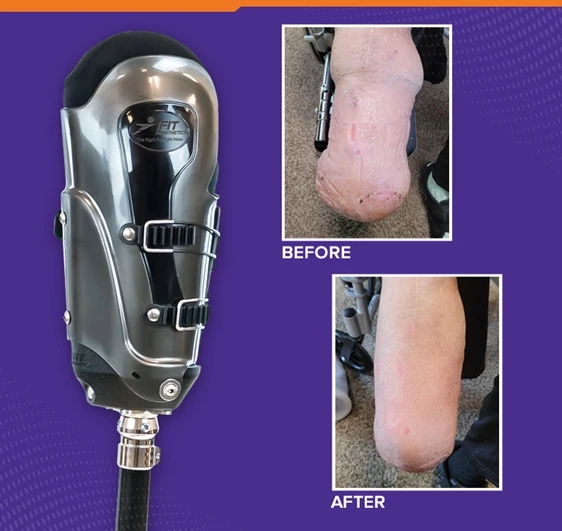When it comes to prosthetics, one of the most crucial factors to consider is how well the prosthetic limb fits the user. A poorly fitted prosthetic can lead to discomfort, pain, and decreased functionality. That is where residual limb shaping comes in. In this article, we will discuss what residual limb shaping is, how it is done, and how IFIT Prosthetics is revolutionizing the process to enhance comfort and functionality for amputees.
What is Residual Limb Shaping?
Residual limb shaping is the process of creating a custom socket for a prosthetic limb. A residual limb is the part of the limb that remains after amputation. The goal of residual limb shaping is to create a socket that fits snugly over the residual limb to provide support and stability while minimizing discomfort and pressure points.
The Importance of Residual Limb Shaping
Residual limb shaping is critical because it can significantly impact the functionality and comfort of a prosthetic limb. A well-fitted socket can help distribute pressure evenly, prevent skin breakdown, and improve overall mobility. On the other hand, an ill-fitted socket can cause discomfort, pain, and even lead to further complications.
Traditional Residual Limb Shaping
Traditionally, residual limb shaping is done using plaster casting. A prosthetist would wrap the residual limb in plaster to create a mold, which is then used to make a socket. While this method is effective, it can be time-consuming and uncomfortable for the patient.
IFIT Prosthetics Residual Limb Shaping
IFIT Prosthetics is revolutionizing the residual limb shaping process with their cutting-edge technology. Their proprietary software, IFIT 3D, uses a 3D scanner to create a digital model of the residual limb. This model is then used to create a 3D-printed socket, resulting in a more accurate fit and a faster turnaround time.
The IFIT 3D Process
The IFIT 3D process starts with a consultation with an IFIT Prosthetics clinician. The clinician will use the 3D scanner to create a digital model of the residual limb, which is then used to create a 3D-printed socket. The socket is then fine-tuned and adjusted to ensure the best possible fit.
Benefits of IFIT Prosthetics Residual Limb Shaping
There are several benefits to using IFIT Prosthetics residual limb shaping. Firstly, the process is more accurate, resulting in a better-fitting socket. Secondly, it is faster, with the entire process taking as little as a few days. Finally, it is less invasive and uncomfortable than traditional plaster casting methods.
Conclusion
Residual limb shaping is a critical component of creating a well-fitted prosthetic limb. IFIT Prosthetics' innovative technology is revolutionizing the process, providing amputees with a more accurate, faster, and less invasive way to create a custom socket. With IFIT Prosthetics, amputees can experience greater comfort and functionality, allowing them to live life to the fullest.
FAQs
Is residual limb shaping painful?Residual limb shaping can be uncomfortable but should not be painful. IFIT Prosthetics' 3D scanning and printing process is less invasive and uncomfortable than traditional plaster casting methods.
How long does the residual limb shaping process take?The entire process can take as little as a few days with IFIT Prosthetics' innovative technology.


